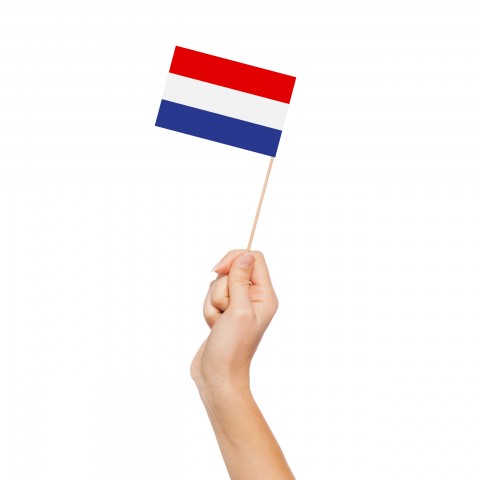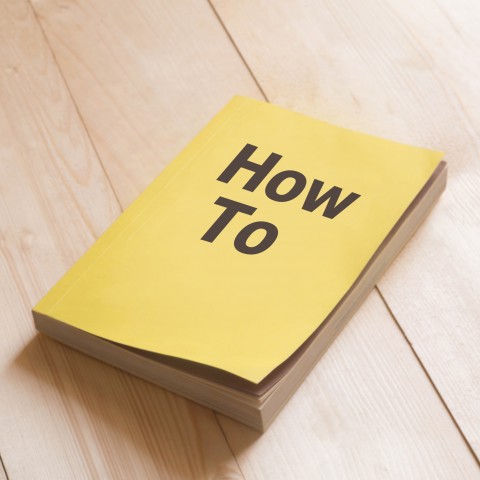
Would you like to study or teach in the Netherlands? Then it might be handy to know the most common Dutch classroom phrases for students and teachers. Whether you’re about to join a study program as a foreign student in the Netherlands, start one of those Dutch language courses, or teach in a Dutch school, you will have to learn how to communicate in the classroom.
As a student, it will be handy to know how to address your teachers in Dutch, ask questions, and understand instructions. And as a teacher, you might want to know how to ask questions, give instructions, and, yes, how to discipline your students.
From Dutch classroom greetings to Dutch classroom command phrases, you will have to know or understand them. In this guide, you’ll find everything you need to know as a teacher or a student, from common classroom phrases to useful classroom vocabulary in Dutch.
Happy learning (or teaching)!

 Table of Contents
Table of Contents
- School Vocabulary
- Teacher’s Phrases
- Student’s Phrases
- Tests Instructions
- How DutchPod101 Can Help You Learn More Dutch
1. School Vocabulary
Before we start with the phrases, let’s first see some classroom vocabulary in Dutch. From educational buildings to subjects to supplies, it will help you find your way around the schoolyard or the campus.
1- Educational Infrastructures
| Gebouw | Building |
| Schoolplein | Schoolyard |
| Gang | Hallway |
| Klaslokaal | Classroom |
| Kantine | Canteen |
| Secretariaat | Secretariat |
| Lerarenkamer | Teachers’ roo |
| Bibliotheek | Library |
| Gymzaal | Gym |
| Collegezaal | Lecture hall |
2- Subjects

| Wiskunde | Math |
| Biologie | Biology |
| Scheikunde | Chemistry |
| Informatica | Computing |
| Natuurkunde | Physics |
| Kunst | Art |
| Tekenen | Drawing |
| Nederlands | Dutch |
| Frans | French |
| Engels | English |
| Duits | German |
| Spaans | Spanish |
| Filosofie | Philosophy |
| Latijns | Latin |
| Grieks | Greek |
| Economie | Economy |
| Maatschappijleer | Social studies |
| Geschiedenis | History |
| Aardrijkskunde | Geography |
| Muziek | Music |
| Lichamelijke opvoeding | Physical education (PE) |
- ➜ To practice your pronunciation, have a look at our free Dutch vocabulary list on School Subjects, with recorded words and example phrases, on DutchPod101.
2- School Supplies
| Schrift | Notebook |
| Map | Binder |
| Vel papier | Sheet of paper |
| Boek | Book |
| Pen | Pen |
| Potlood | Pencil |
| Gum | Eraser |
| Puntenslijper | Pencil sharpener |
| Etui | Pen case |
| Rugzak | Backpack |
| Rekenmachine | Calculator |
| Schaar | Scissors |
| Liniaal | Ruler |
- ➜ For more Back to School Essentials, School and Classroom vocabulary, be sure to explore our free vocabulary lists with audio recordings.
2. Teacher’s Phrases

As a teacher, you need to be able to give instructions, ask questions and, every now and then, bring some discipline to the classroom. And as a student, it’s also very useful to learn these phrases, as it’s important that you understand your teacher.
Let’s see some of the most common Dutch classroom command phrases.
1- Instructions
| Vandaag gaan we vervoegingen leren. (“Today we are going to learn conjugations.”) |
| Open je boek op pagina 12. (“Open your book on page 12.”) |
| Pak een vel papier. (“Take a sheet of paper.”) |
| Steek je hand op als je het antwoord weet. (“Raise your hand if you have the answer.”) |
| Luister en herhaal na mij. (“Listen and repeat after me.”) |
| Kijk naar de afbeelding op het scherm. / Kijk naar de afbeelding op het bord. (“Look at the picture on the screen.” / “Look at the picture on the board.”) |
| Schrijf deze zin op. (“Write this sentence.”) |
| Spel dit woord. (“Spell this word.”) |
| Maak een zin met het woord “vakantie”. (“Make a sentence with the word “holiday””.) |
| Hoe zeg je “tomorrow” in het Nederlands? (“How do you say “tomorrow” in Dutch?”) |
| We gaan kleine groepjes vormen. (“We will form small groups.”) |
2- Questions
| Begrijp je deze zin? (“Do you understand this sentence?”) |
| Wat betekent dat? (“What does that mean?”) |
| Wie kan deze vraag beantwoorden? (“Who can answer this question?”) |
| Wat is het juiste antwoord? (“What is the correct answer?”) |
| Wie wil er hardop voorlezen? (“Who wants to read aloud?” |
3- Discipline
| Ga zitten. (“Take a seat.”) |
| Stilte alstublieft. (“Silence, please.”) |
| Let op. (“Pay attention.”) |
| Stop met praten. (“Stop talking.”) |
- ➜ Are you going to live on a Dutch campus? Find your way there with our free vocabulary list with Dutch Words and Phrases for Living on a School Campus, complete with examples and recordings.
3. Student’s Phrases
So, let’s now see some useful Dutch classroom phrases that students use: from addressing teachers, to asking questions, to stating your problem.
1- Addressing Teachers
In primary school, school teachers are addressed as :
- [Male] Meester (Literally: “Master”)
- [Female] Juf or juffrouw (Literally: “Miss”)
In High school and University, teachers are addressed as meneer (“Mister”) and mevrouw (“Madam” or “Mrs”), often combined with their last name.
So in Dutch classroom greetings, as a student, you could just say Hallo meneer van der Zand (“Hello Mister van der Zand”) or Goedemorgen mevrouw Jacobs (“Good morning Mrs. Jacobs”).
And when talking about the teachers in general, you would refer to them with leraar (“teacher,” male) or lerares (“teacher,” female).
Let’s see some examples on how you could talk about teachers:
- Onze leraar Frans heeft ons huiswerk gegeven. (“Our French teacher gave us homework.”)
- Mevrouw Jacobs geeft Duits. (“Mrs. Jacobs teaches German.”)
- Meneer, ik heb een vraag. (“Mister, I have a question.”)
As a teacher, whether it’s your colleagues or your students, you can simply call them by their names. And if you want to make one of those good Dutch classroom greetings, you could say Hallo allemaal (“Hello everyone”).
2- I have a question

| Ik begrijp het niet. (“I don’t understand.”) |
| Ik begrijp de spelling van dit woord niet. (“I don’t understand the spelling of this word.”) |
| Ik heb moeite met het vervoegen van dit werkwoord. (“I have trouble conjugating this verb.”) |
| Kunt u dat alstublieft herhalen? (“Could you repeat that please?”) |
| Ik weet niet hoe ik dat moet zeggen. (“I don’t know how to say that.”) |
| Hoe spreek je het uit? (“How do you pronounce it?”) |
| Welke pagina? (“What page?”) |
3- I have a Problem
| Ik heb mijn boek vergeten. (“I forgot my book.”) |
| Ik heb geen pen. (“I don’t have a pen.”) |
| Ik ben mijn schrift kwijt. (“I lost my notebook.”) |
| Ik heb een probleem. (“I have a problem.”) |
| Kan ik een gum lenen? (“Can I borrow an eraser?”) |
| Ik heb wat meer tijd nodig. (“I need a little more time.”) |
| Ik ben bijna klaar! (“I’m almost done!”) |
| Mag ik naar de wc gaan? (“Can I go to the bathroom?”) |
| Ik kan niet bij de volgende les zijn. (“I can’t be at the next class.”) |
| Ik heb mijn huiswerk niet gemaakt. (“I didn’t do my homework.”) |
| Ik heb mijn huiswerk vergeten. (“I forgot my homework.”) |
| Mijn hond heeft mijn huiswerk opgegeten. (“My dog ate my homework.”) |
- ➜ Are you too cool for school? Check out our Top 15 Phrases for Bad Students.
4. Tests Instructions
Having an exam is already nerve wracking and the last thing you want is to not understand the instructions. So prepare yourself with these Dutch classroom phrases about test instructions. This way you will perfectly understand how the exam will take place and exactly what you have to do.
1- Basic Vocabulary
| Examen (“Exam”) |
| In the classroom vocabulary in Dutch, there exist different words to refer to a “test”: the word examen is mostly used at university, proefwerk at high school and toets at primary school. |
| Mondeling examen (“Oral exam”) |
| Diploma (“Degree”) |
| Surveillant (“Test supervisor”) |
| Formulier (“Form”) |
| Opstel (“Essay”) |
| Instructies (“Instructions”) |
2- Instructions

| Lees de tekst. (“Read the text.”) |
| Lees de zin. (“Read the sentence.”) |
| Kruis het juiste antwoord aan. (“Check the right answer”) |
| Vul de lege plekken in. (“Fill in the blanks.”) |
| Maak deze zinnen af. (“Complete these sentences.”) |
| Zet deze afbeeldingen in de juiste volgorde. (“Put these images in the right order.”) |
| Onderstreep het goede antwoord. (“Underline the correct answer.”) |
| Streep de foute antwoorden door. (“Cross out the wrong answers.”) |
| Luister naar het voorbeeld. (“Listen to the example.”) |
| Beschrijf de afbeelding. (“Describe this image.”) |
| Schrijf rond de 200 woorden. (“Write about 200 words.”) |
| Vat deze tekst samen in 100 woorden. (“Summarize this text in 100 words.”) |
- ➜ For more Taking Tests vocabulary, be sure to explore our free vocabulary list with audio recordings.
5. How DutchPod101 Can Help You Learn More Dutch
In this guide, you have learned the most common Dutch classroom phrases, for students and teachers alike. From classroom vocabulary in Dutch, Dutch classroom command phrases for teachers to Dutch classroom greetings, this guide should provide you with a solid foundation for your daily Dutch school life.
Which Dutch classroom phrases will you use the most? Is there any other specific topic you’d like to read more about? Make sure to share with your fellow students in the comments below!
You can start practicing and rehearsing these phrases right away by checking out the free vocabulary lists on DutchPod101. Each list contains a recorded pronunciation of the Dutch words and phrases it covers, making them perfect for getting your pronunciation just right! In addition, we provide a variety of free resources and Dutch online classes for learners at every level. With DutchPod101, you can really keep your Dutch language learning fun and diverse.
Would you like some special attention? Remember that we also offer a Premium PLUS service with personal 1-on-1 coaching: MyTeacher. Let your private teacher help you with Dutch vocabulary, pronunciation, grammar, and much more. You’ll receive personalized exercises, constructive feedback, and interactive assignments.

Useful Guide with Dutch Restaurant Vocabulary and Phrases

Going to a restaurant is probably one of the favorite things people do when they are in a foreign country. It’s a great way to go out, enjoy some new food and discover a new hip and trendy restaurant. However, when you don’t speak the language fluently, the whole experience can be unnecessarily stressful.
How do things work around here? How can I order? And how much should I tip? Knowing the Dutch restaurant vocabulary and phrases is one thing, but learning about the ins and outs of Dutch dining will truly take you to the next level.
In this article, we’ll go through the three steps of going to a restaurant in the Netherlands and, for each phase, we’ll list the most common Dutch phrases for restaurants, as well as the restaurant etiquette and unwritten rules you need to know.
So let’s learn how to order food in Dutch and start to really enjoy the Dutch culinary experience.

 Table of Contents
Table of Contents
1. Before Dining
A- Booking a Restaurant: When and How?
Making a reservation in a Dutch restaurant is not always necessary, as you can often show up unannounced. However, without a booking, you will not have the guarantee that a table will be available. This is especially the case for the more popular restaurants, or if you’re planning to go out during busier nights like Friday or Saturday night.
So, is it really necessary to make a reservation at a restaurant in the Netherlands? No, but it can be a great way to make sure that your night goes as planned. So how to make a booking in a Dutch restaurant? Some restaurants have their own booking system on their official website, while others use The Fork or other similar third-party services. In most cases, you can also make a phone call, if you prefer to do so. Booking information and phone numbers are usually available on the restaurant information on Google Maps.
B- Conversation Example
Would you like to make a reservation by phone? Let’s learn restaurant phrases in Dutch grammar on reservations, between a client and a restaurant employee:
| Hallo, Restaurant “De Bolle Beer”, hoe kan ik u helpen? (“Hello, “De bolle beer” restaurant, how can I help you?”) Hallo, ik wil graag een tafel reserveren voor morgenavond. (“Hello, I would like to book a table for tomorrow evening.”) Oké. Voor hoeveel personen? (“Okay. For how many people?”) Voor vier personen. (“For four people.”) Wilt u binnen of buiten eten? (“Would you like to eat inside or outside?”) Buiten als dat kan. (“Outside if that’s possible.”) Oké. Voor hoe laat? (“Okay. At what time?”) Om half acht. (“At half past seven.”) Wat is uw naam? (“What is your name?”) Mijn naam is Sofia Real. (“My name is Sofia Real.”) Oké Sofia. Morgenavond om half acht, vier personen, buiten op het terras. De reservering is gemaakt. (“Okay Sofia. Tomorrow night at half past seven, four people, outside on the terrace. The reservation has been made.”) Perfect. Heel erg bedankt! Tot morgen. (“Perfect. Thank you very much! See you tomorrow.”) |
- ➜ Do you still get nervous when calling in Dutch? Then make sure to have a look at our Useful Phrases For a Phone Call vocabulary list. It’s freely available on DutchPod101.
Do you prefer to send an e-mail or message to make the reservation, then you can also write the following message:
| Hallo, ik wil graag een tafel reserveren voor morgenavond om 19:30u voor 4 personen. Mijn naam is Sofìa Real. (“Hello, I would like to reserve a table for 4 people tomorrow evening at 7:30 pm. My name is Sofia Real.”) |
2. During Dining
So, you know which restaurant to go to, you might even have made a reservation. Let’s now see some common Dutch phrases for restaurants, such as asking for your table, asking for the menu, and how to order food in Dutch.
A- Asking for Your Table

Did you already book a table? Then this part of the process will be as simple as introducing yourself when entering the restaurant. Let’s learn these restaurant phrases in Dutch grammar:
| Hallo, ik heb een reservering op naam van Jack Smith. (“Hi, I have a reservation under the name of Jack Smith.”) Goedenavond, ik heb een reservering op naam van Jack Smith, voor zes personen. (“Good evening, I have a reservation under the name of Jack Smith, for six people.”) |
And you will be shown your table.
Didn’t you make a reservation? Then you can ask the following question when you enter the restaurant:
| Hallo, hebben jullie nog een tafel vrij voor vier personen? (“Hello, do you have a table available for four people?”) Ja, we hebben nog een tafel vrij op ons terras. Loop maar met me mee. (“Yes, we still have a table available on our terrace. Come with me.”) |
The host waiting at the entrance could also ask you directly some questions, such as this eating at the restaurant phrases in Dutch:
| Goedenavond, komen jullie om te eten? (“Good evening, are you here to eat?”) Ja. (“Yes.”) Nee, alleen om wat te drinken. (“No, just for a drink.”) |
| Wilt u binnen of buiten eten? (“Would you like to eat inside or outside?”) Binnen, alstublieft. (“Inside, please.”) |
| Voor hoeveel personen? (“For how many people?”) Voor twee personen? (“For two people?”) Voor drie personen. (“For three people.”) |
- ➜ You can find more words and practice your pronunciation with our vocabulary list on Restaurants.
B- Asking for the Menu
Many restaurants in the Netherlands already have the menu on the table or give you the menu when you sit down. But in case it’s not there, they forget, or they are really busy, you might have to ask for it.
| Pardon. Mag ik de menukaart zien? (“Excuse me. Can I see the menu?”) |
Dutch menus don’t always follow a standard pattern. However, you will usually find the following components: voorgerechten or “appetizers,” soep, which is “soup,” hoofdgerechten, meaning, “main entrées,” dranken, which is “drinks,” and of course the nagerechten, your “desserts.”
- ➜ Are you missing a fork or a spoon? After learning Dutch food vocabulary on Food Utensils and Tableware, you will be able to ask for it without hesitating.
C- Ordering Food and Drinks

Now the most exciting time has arrived: you can order that basic food in Dutch. It’s time to move on to some eating at the restaurant phrases in Dutch. But how to order food in Dutch? Don’t be nervous, ordering is usually fairly easy as you can just refer to the menu.
In the Netherlands, after the waiter shows you your table, he or she will usually first ask you what you want to drink.
| Wat wilt u drinken? (“What do you want to drink?”, singular or formal plural) Wat willen jullie drinken? (“What do you want to drink?”, casual plural) Ik wil graag een appelsap, alstublieft. (“I’d like an apple juice, please.”) Niets voor mij. (“Nothing for me.”) Misschien later. (“Maybe later.”) |
- ➜ What drink would you like to order in Dutch? Have a look at our free vocabulary list on Drinks, on DutchPod101.
When you look ready to order, the waiter may ask you:
| Heeft u een keus gemaakt? (“Have you made a choice?”) |
To which you may respond with one of these ‘eating at the restaurant’ phrases in Dutch:
| Nee, we hebben nog wat meer tijd nodig. (“No, we need a little more time.”) De varkenshaas, wat is dat? (“The varkenshaas, what is that?”) Ja, ik wil graag de pompoensoep vooraf en daarna de steak met frietjes als hoofdgerecht, alstublieft. (“Yes, I’d like the pumpkin soup first and then the steak and fries for the main course, please.”) Ja, ik wil graag de saté als hoofdgerecht en de chocolade mousse als nagerecht, alstublieft. (“Yes, I would like the saté as a main course and the chocolate mousse for dessert, please.”) |
When you order in the Netherlands, you usually say alstublieft (“please”) after your order.
Are you not sure what to order? You can always ask the staff for recommendations. The appropriate question in such a situation would be Wat raadt u aan? (“What do you recommend?).
If you have any allergies or a special diet, then you might also want to say or ask:
| Ik ben allergisch voor pinda’s. (“I’m allergic to peanuts.”) Zitten er pinda’s in dit gerecht? (“Are there peanuts in this dish?”) Wat zijn de vegetarische gerechten? (“What are the vegetarian dishes?”) Hebben jullie vegan gerechten? (“Do you have vegan dishes?”) |
- ➜ For more sentences on how to order food in Dutch, you may want to check our vocabulary list with Useful Phrases and Vocabulary for Ordering Food.
3. After Dining
Once you have enjoyed your meal and the waiter sees that you have finished, he or she will probably come to your table and kindly ask you one of the following questions:
| Wilt u nog iets anders? (“Would you like anything else?”) Nee, bedankt. We zijn helemaal voldaan. (“No thanks. We are completely satisfied.”) Was alles naar wens? (“Was everything to your liking?”) Ja het was heerlijk, dankuwel. (“Yes, it was delicious, thank you.”) Wilt u nog een kopje koffie? (“Will you have a coffee?”) Ja, graag. (“Yes, please.”) |
A- Asking for the Bill

If the waiter asks you if you need anything else, you can also ask for the bill:
| De rekening alstublieft. (“The bill, please.”) Kunnen wij de rekening krijgen? (“Can we get the bill?”) Ja, ik zal de rekening voor u halen. (“Yes, I’ll get the bill for you.”) U kunt direct aan de balie betalen. (“You can pay directly at the counter.”) |
Then, when it’s time to pay:
| Willen jullie apart of samen betalen? (“Do you want to pay separately or together?”) Ik zal voor iedereen betalen. (“I will pay for everyone.”) Apart, alstublieft. (“Separately, please.”) |
B- What About the Tip?
The tips in the Netherlands are very rarely included in the price, so it is polite to give tips in restaurants, pubs, and some cafés. About ten to twelve percent would be appropriate. Dutch waiters don’t survive on tips, but they’re rarely paid very well, so a tip is a welcome bonus to their wage.
Tips are usually left on the table in the form of coins, a bill, or in a dedicated tip box at the counter. But you could also ask to add a certain amount or 10% to the bill when paying by card: Voeg maar tien procent toe als fooi. (“Just add ten percent as a tip.”)
- ➜ Would you like to see more common restaurant vocabulary and phrases with recorded examples to work on your pronunciation? Why not stop by our vocabulary list on Key Phrases for Restaurants.
4. How DutchPod101 Can Help You Learn More Dutch

In this guide, you have learned everything you need to know when going to a Dutch restaurant. You now know how to make a reservation and how to order food in Dutch. For each step, you know the tips and tricks, as well as Dutch restaurant vocabulary and phrases. Did we forget some specific situations you’d like to learn more about?
You can start practicing speaking Dutch and rehearsing these common Dutch phrases for restaurants by checking out the free vocabulary lists on DutchPod101.com. Each list contains a recorded pronunciation of the words and phrases it covers, making them perfect for getting your pronunciation just right! In addition, we provide a variety of free resources and audio/video lessons for learners at every level.
Would you like some special attention to your Dutch language learning? Remember that we also offer a Premium PLUS service with personal 1-on-1 coaching: MyTeacher. Let your private teacher help you with Dutch vocabulary, pronunciation, grammar, and much more. You’ll receive personalized exercises, constructive feedback, and interactive assignments.

Useful Guide to Improve Your Dutch Conversation Skills

Did it ever happen to you that you just froze in a Dutch conversation? You went into the conversation with confidence, but in the end, were only able to blurt out a bunch of inarticulate words? Don´t worry about that, it happens to the best. You just need some tips on how to improve your Dutch conversation skills.
You don’t need to dive into academic lessons or books to be able to master those conversation skills in Dutch, it doesn’t have to be so complicated. You just need to learn some tricks such as reaction words, filler words, or conversation starters.
This guide will teach you how to improve your Dutch speaking skills: it all starts with making your own unique conversation “cheat sheet” with the words and sentences you might need the most. After that, you only need to learn some common Dutch questions, reactions, and answers, and you will be good to go and start that Dutch conversation.
This way, nothing will stop you from making new Dutch friends and starting conversations with fellow students, coworkers, or random strangers.

 Table of Contents
Table of Contents
- Make Your Own Conversation Cheat Sheet
- Learn Dutch Reaction Words
- Use Dutch Filler Words
- Learn Common Questions and Answers
- Use Dutch Conversation Starters
- How to Improve Your Dutch Conversation Skills
- How DutchPod101 Can Help You Learn Dutch
1. Make Your Own Conversation Cheat Sheet
So, how to improve your Dutch conversation skills? One of the best ways for improving Dutch conversation skills is to prepare yourself with your own personalized conversation cheat sheet.
1- What’s a cheat sheet?
So, what´s a conversation cheat sheet? It’s a list of words, phrases, and conversation lines that you can make for yourself. It’s no one-size-fits-all list, but it’s rather something personalized as it assembles information that refers to YOU, for example, relating to your background, lifestyle, age, and interests.
2- Why would I need one?
When meeting new people, you will have to introduce and talk about yourself. So, it could come in handy to prepare some self-introduction phrases. This way, you will be able to answer questions about yourself, your story, hobby, interests, background, and, last but not least, what motivates you to learn the Dutch language.
This will not only make the conversation runs smoother, as you are well prepared and have the vocabulary ready to talk about yourself, but it will also make you more confident when meeting new people. It’s a great way to be able to connect with your conversation partners and establish lasting relationships from the start with your (hopefully) new Dutch friends.
3- How do I make a conversation cheat sheet?
As a conversation cheat sheet is something personalized, every cheat sheet is unique. It all depends on your story and which information you would like to highlight.
One way to go is to start writing your own self-introduction and then tell something about your hobbies and interests, for example:
| Hallo, mijn naam is Julia, ik kom uit Argentinië en ik ben 35 jaar oud. Ik woon in Amsterdam en ik werk hier als socioloog. Daarvoor heb ik 4 jaar in Spanje gewoond, ik studeerde daar sociologie aan de universiteit van Madrid. Ik hou van films kijken, koken en wandelen. |
| “Hello, my name is Julia, I am from Argentina and I am 35 years old. I live in Amsterdam and I work here as a sociologist. Before that I lived in Spain for 4 years, where I studied sociology at the University of Madrid. I like watching movies, cooking and walking.” |
- ➜ If you’re a beginner, the best place to start is our blog article on How to Introduce Yourself in Dutch. It’s freely available on DutchPod101.
You can elaborate on the individual parts of your conversation cheat sheet and imagine how you would answer specific questions, by gathering phrases and words that specifically apply to your situation:
|
|
|
4- Useful Learning Tools
You now know what a conversation cheat sheet is, why you would need one, and what information you should include. Do you have a hard time creating your own introduction phrases and answers? Don´t worry, there are plenty of resources you can use, depending on your level:
- Online translators may have a bad reputation. However, nowadays, they work quite well and can definitely help you with your more basic Dutch introduction phrases. There are many different online translators, but Google translate is the most popular option.
- Other online tools such as Reverso context can help you with idioms and expressions. They’re not flawless, but still, it’s a nice resource to use.
- DutchPod101 has tons of useful free content, blog articles, and vocabulary lists you can use. The vocabulary lists may especially come in handy if you’re looking for a specific topic. They also provide sentences and vocabulary that suit specific needs.
- A personal teacher is a great way to learn fast and efficiently. Your own personal teacher can definitely guide you through the process of writing your conversation cheat sheet and fix any mistakes you may make. Be sure to check our private coaching service from our Premium PLUS offer.

2. Learn Dutch Reaction Words
With reaction words and expressions, you can fill up those awkward silences and miscommunications. It’s a great way to show that you have been paying attention and are interested in your Dutch conversation partner. They will definitely make your conversations smoother and more lively. So, let’s have a look at some Dutch reaction words that express excitement, curiosity, and disbelief, among other reactions.
1- Great!
A: Ik vind de serie die je me hebt aangeraden heel erg leuk (“I really love the series you’ve recommended me.”)
B: Wat leuk, ik ben blij dat je het leuk vindt! (“That’s great, I’m glad you like it!”)
2- Sorry.
A: Ik heb een notenallergie. (“I have a nut allergy.”)
B: Oh, sorry, dat wist ik niet. (“Oh, sorry, I didn’t know.”)
3- I can’t believe it.
A: Ik hou niet van kaas. (“I don’t like cheese.”)
B: Echt waar? (“Really?”) [Formal/Casual]
B: Meen je het? (“Are you serious?”) [Formal/Casual]
B: Maak je een grapje? (“Are you making a joke?”) [Casual]
4- That’s a shame.
A: Ik kan vanavond niet komen. (“I can’t come tonight.”)
B: Ah, dat is jammer. (“Oh, that’s a shame.”) [Formal/Casual]
B: Ah, dat is balen! (“Ah, that sucks!”) [Casual]
5- Keep me posted!
A: Ik weet nog niet of ik vanavond kan komen. (“I don’t know if I can come tonight.”)
B: Oké, hou me op de hoogte! (“Okay, keep me posted!”)
6- Thanks for coming!
A: We hebben genoten van het feest gisteravond. (“We have enjoyed the party last night.”)
B: Wat fijn, bedankt voor het komen! (“How nice, thanks for coming!”)
- ➜ This is just a quick list of common reaction words and phrases, but you can find more useful information in our blog article on Intermediate Dutch Phrases.
3. Use Dutch Filler Words
So what are filler words? Dutch filler words are those short sounds and words that locals use to fill the gaps when talking. You don’t necessarily have to use them, but they are useful as they give you time to think, and they definitely will make you sound more local.
Let’s have a look at some of the most common Dutch filler words:
1-
| Dutch | Literally | English Equivalent |
| Uhm… | – | “Uh…” |
Ik zou graag wat melk en, uhm… twee eieren kopen. (“I would like to buy some milk and, uh… two eggs.”) De supermarkt? Uhm, het is de eerste straat naar links en dan zie je de supermarkt aan de rechterkant van de straat. (“The supermarket? Uh, it’s the first street on the left and then you see the supermarket on the right side of the street.”) | ||
2-
| Dutch | Literally | English Equivalent |
| Maar goed | “But good” | “But yeah” / “Anyway” |
Maar goed, ik ben dus eigenlijk nog steeds boos op haar. (“Anyway, I’m still mad at her.”) Maar goed, genoeg daarover, hoe gaat het met jou? (“Anyway, enough about that, how are you?”) | ||
3-
| Dutch | Literally and English Equivalent | |
| Eigenlijk | “Actually” | |
Maar, eigenlijk, koop ik dit product al jaren. (“But, actually, I’ve been buying this product for years.”) Eigenlijk eet ik liever binnen. (“Actually, I prefer to eat inside.”) Hij vind dat eigenlijk helemaal niet zo grappig. (“He actually doesn’t think that’s funny at all.”) | ||
4-
| Dutch | Literally and English Equivalent | |
| Nou | “Well” / “Well then” | |
Nou, ik denk dat hij het niet leuk vond dat je zo tegen hem sprak. (“Well, I think he didn’t like you talking to him like that.”) Nou, ik ben het niet helemaal met je eens. (“Well, I don’t quite agree with you.”) We gaan nou niet zo snel naar Amsterdam op dit moment. (“Well, we are not going to Amsterdam anytime soon.”) | ||
5-
| Dutch | Literally and English Equivalent | |
| Dus | “So” / “Well” | |
Dus uhm, ik ga niet mee vanavond. (“So uh, I’m not coming along tonight.”) Dus, wat is er met je aan de hand? (“So, what’s up with you?”) | ||
- ➜ For more Dutch filler words, example sentences, and how to use them in your conversations, make sure to have a look at our article on Dutch Filler words.
4. Learn Common Questions and Answers

Asking questions and answering them is part of our daily life. It’s how we get to know each other, how we organize our lives, and how we get a better understanding of someone or something.
Do you already know the golden rules of Dutch questions? Do you know the Dutch question patterns, as well as the most important question words? If you need a refresher, go to our complete article on Dutch Questions and Answers.
Otherwise, let’s dive into some of the most common questions as well as some examples of answers you might want to add to your conversation cheat sheet. Once again, choose the sentences that feel relevant to your personal story and interests.
1- How are you?
- Hoe gaat het met je? (“How are you”) [Casual]
- Hoe gaat het met u? (“How are you”) [Formal]
Another informal way to ask this question is: Alles goed? (“Everything fine?”)
Possible answers for this question include:
► Het gaat goed met me. (“I am doing great.”)
► Ik voel me niet goed. (“I am not feeling well.”)
► Het gaat wel. (“I am fine.”)
► Ik heb het erg druk. (“I am very busy.”)
2- What’s your name?
- Wat is je naam? (“What’s your name?”) [Casual]
- Wat is uw naam? (“What’s your name?”) [Formal]
Another way to ask this question in Dutch is:
- Hoe heet je? [Casual]
- Hoe heet u? [Formal]
Let’s now have a look at the answers:
► Ik heet Sophie. (“My name is Sophie.”)
► Mijn naam is Sophie. (“My name is Sophie.”)
► Ik ben Sophie. (“I am Sophie.”)
3- Where are you from?
- Waar kom je vandaan? (“Where are you from?”) [Casual]
- Waar komt u vandaan? (“Where are you from?”) [Formal]
Let’s have a look at some possible answers:
- Foreign answers
► Ik ben Duits. (“I’m German.”)
► Ik kom uit Frankrijk. (“I’m from France.”)
- Local answers
► Ik kom uit Amsterdam. (“I’m from Amsterdam.”)
► Ik ben een Rotterdammer. (“I’m a Rotterdammer.” – a person from Rotterdam)
► Ik kom uit Brabant. (“I’m from Brabant.”)
4- Do you speak Dutch?
- Spreek je Nederlands? (“Do you speak Dutch?”) – Casual
- Spreekt u Nederlands? (“Do you speak Dutch?”) – Formal
- Spreek je Engels? (“Do you speak English?”) – Casual
- Spreekt u Engels? (“Do you speak English?”) – Formal
Let’s have a look at some possible answers:
► Ik spreek een beetje Nederlands. (“I speak a little Dutch.”)
► Ik spreek vloeiend Engels. (“I speak English fluently.”)
► Min of meer. (“So-so.”)
5- What do you do?
- Wat doe je? (“What do you do?”) [Casual]
- Wat doet u? (“What do you do?”) [Formal]
Or sometimes it’s better to be a bit more specific:
- Wat voor werk doe je? (“What kind of work do you do?”)
- Wat is jouw baan? (“What’s your job?”)
- Waar werk je? (“Where do you work?”)
- Wat voor een studie doe je? (“What kind of study do you do?”)
- Wat studeer je? (“What do you study?”)
- Waar studeer je? (“Where do you study?”)
Some possible answers are:
► Ik ben politieagent. (“I’m a police officer.”)
► Ik werk in IT. (“I work in IT.”)
► Ik werk in een kledingwinkel. (“I work in a clothing store.”)
► Ik studeer anthropologie. (“I study anthropology.”)
► Ik studeer aan de Universiteit van Amsterdam. (“I study at the University of Amsterdam.”)
5. Use Dutch Conversation Starters

It can be hard to start a conversation with random strangers. It may be a little easier when you’re among fellow students, coworkers, or friends, as you have something in common, but you’ll still have to come up with some good opening lines.
It’s even more complex to start a conversation in a foreign language, but it definitely helps to be well prepared. Add some good conversation starters to your conversation cheat sheet and you’ll be good to go!
Here are a few examples for various situations:
- Ik ga nog een drankje halen. Kan ik iets voor je meenemen?
“I’m going for another drink. Can I get you something?” - Aan welk project werk je?
“Which project are you working on?” - Weet jij een goede plek om te lunchen?
“Do you know a good place to have lunch?” - Woon je al lang in Amsterdam?
“Have you been living in Amsterdam for a long time?” - Wat zijn jouw plannen voor dit weekend?
“What are your plans for this weekend?”
- ➜ There are many other conversation starters that you can use for a wide variety of situations, from strangers, people you already know, colleagues, schoolmates, and romantic dates to reconnecting with friends. For many more examples, have a look at our full guide on Dutch Conversation Starters.
6. How to Improve Your Dutch Conversation Skills
So, how to improve your Dutch speaking skills? Let’s give you some useful tips on the best ways to improve Dutch conversation skills.
1- Get as much exposure as possible
Exposure is everything, so listen to Dutch podcasts and music, watch Dutch movies, TV shows, or series, read Dutch books or make some new Dutch friends. There are many different ways to get some exposure to the Dutch language, so choose the exposure that works for you and your situation.
Exposure will help you learn the language without feeling like it’s all boring study work. It helps solidify everything you’re learning in a fun way, as you’ll get to experience words and structures in more natural situations.
Sure, you’ll need some basics before you can start, but there’s no need to wait too long, as recordings can be slowed down and videos can be subtitled.
2- Use every opportunity to practice
Practice is key. It may be a cliché, but it’s definitely true. Having real-life conversations is truly the best way to put your new grammar and vocabulary lessons into practice.
Do you feel like your Dutch is not good enough to have a conversation? You don’t need more than some basics to get out there and talk to someone. The conversation might not go very far, but you will definitely learn from it.
Of course, if you are not in the Netherlands, it may be harder to find some Dutch language practice opportunities. However, language meet-ups or online chats are all valid ways to practice, as long as you get to talk to a native speaker and experiment with what you’ve learned.
3- Don´t worry too much about grammar or vocabulary
As we already said before, you don’t need to speak Dutch perfectly before you put those conversation skills in Dutch into practice. Don´t worry too much about Dutch grammar or vocabulary, it will hinder you from trying to speak Dutch. Just use the knowledge you have, and don’t be afraid to make mistakes. You will learn from them.
And if you want to be a bit more prepared, pick the topics you will need and learn the basics. Often you can get quite far when you mix up the words you already know and just make new phrases out of them.
4- Get some feedback
Practicing is very important, but it might be even more important to get feedback. Without feedback, you might run the risk of getting stuck in the same mistakes without being able to spot and correct them.
So how to get that feedback? Finding a language partner (online or in person) is one way to go. Your language partner may be interested in your native language, and this way, you’ll both benefit from the relationship; besides that, it could lead to a nice new friendship.
Another option is a language teacher, as a private teacher will be able to set you on the right path, correct your grammar mistakes and improve your pronunciation. You can probably find a private teacher or classroom-based language course where you live or subscribe to an online service such as our Premium PLUS coaching on DutchPod101.
7. How DutchPod101 Can Help You Learn Dutch

In this guide, you have learned how to improve your Dutch speaking skills. One of the best ways to improve Dutch conversation skills is to start with a conversation cheat sheet, then learn about various types of words and expressions that will help you run those conversations more smoothly, from filler words, reaction phrases, common questions, and answers to useful conversation starters.
Is there any other topic you would like to add to your Dutch conversation skills practice? Or are you ready to put these conversation skills in Dutch into practice?
Make sure to explore DutchPod101’s many free resources, such as vocabulary lists with audio recordings. This way, you can practice your Dutch conversation skills and understand your conversation partner even better.
Maybe you would like a private teacher? DutchPod101 also offers personal one-on-one coaching with the premium MyTeacher service. Boost your Dutch with your private teacher’s interactive exercises, personalized feedback, and useful tips.

Countries and Nationalities in Dutch

What is the most common question you will hear as a foreigner in the Netherlands? Yes, that oh-so common question about your nationality. As someone living abroad, you will have the advantage of having that as the perfect ice breaker to start some small talk: someone is bound to ask you where you’re from.
This is your time to make a great impression and show your knowledge of the Dutch nationality vocabulary. What would you say about your nationality in Dutch? Saying Ik ben Frans (“I am French”) or Ik kom uit de Verenigde Staten (“I am from the United States”) may not be enough to keep the conversation going.
This is where this guide may come in handy! By learning more vocabulary on nationalities, as well as the related questions and answers, you’ll be ready to impress with the perfect answer (and follow-up question) for the question: “What is your nationality?”, in Dutch.
 Table of Contents
Table of Contents
- Top 20 Nationalities in the Netherlands
- Conversations About Nationalities
- Country, City, Nationality & Language
- How DutchPod101 Can Help You Learn More Dutch
1. Top 20 Nationalities in the Netherlands

Dutch nouns for nationalities are actually quite easy, they are often written quite similar and for the feminine version you just have to add a ´se´. You’ll find as well that some of the countries and their nationalities in Dutch can be similar to their English equivalents. Furthermore, in Dutch nationality names, adjectives and country names are also written with a capital letter, just like in English! Easy, right?
Let’s have a look at a few examples:
| Country’s name | Noun | Adjective |
| Brazilië (“Brazil”) | Braziliaans, Braziliaanse (Brazilian male version, feminine version) | Braziliaanse (Brazilian) |
| Italië (“Italy”) | Italiaans, Italiaanse (Italian male version, feminine version) | Italiaanse (Italian) |
| Mexico (“Mexico”) | Mexicaans, Mexicaanse (Mexican male version, feminine version) | Mexicaanse (Mexican) |
Let’s see some examples of the adjectives:
- Het Braziliaanse eten. (“The Brazilian food.”)
- Het Braziliaanse volkslied. (“The Brazilian anthem.”)
- De Italiaanse vrouwen. (“The Italian women.”)
- De Mexicaanse man. (“The Mexican man.”)
- Zij houdt erg van Mexicaanse muziek. (“She really loves Mexican music.”)

As you can see, in Dutch the country´s name, nationality and adjective all start with an uppercase letter.
So now let’s have a look at how this would look like for the 20th most common nationalities in the Netherlands.
Dutch demography statistics show that in 2020 about 4.22 million of the Dutch citizens are of non-Dutch origin and half of these are from six backgrounds alone: Turks (inc. Kurds), Moroccans (inc. Berbers), Indonesians (inc. Moluccans), Surinamese, Germans and Poles.
Let’s have a look at the numbers from 2019, and learn some useful Dutch words in the process!
| % | English (Country) | Dutch (Country) | Dutch (Adjective) | Dutch (Nationality) |
| 2.37 | Turkey (inc. Kurds) | Turkije | Turks/e | Turk / Turkse |
| 2.33 | Morocco (incl. Berbers) | Marokko | Marokkaans/e | Marokkaan / Marokkaanse |
| 2.08 | Indonesia (incl. Moluccans) | Indonesië | Indonesisch/e | Indonesiër / Indonesische |
| 2.05 | Surinam | Suriname | Surinaams/e | Surinamer / Surinaamse |
| 2.03 | Germany | Duitsland | Duits/e | Duitser / Duitse |
| 1.07 | Poland | Polen | Pools/e | Pool / Poolse |
| 0.9 | Former Netherlands Antilles | Voormalige Nederlandse Antillen | Antilliaans/e | Antilliaan / Antilliaanse |
| 0.69 | Belgium | België | Belgisch/e | Belg / Belgische |
| 0.57 | Syria | Syrië | Syrisch/e | Syriër / Syrische |
| 0.53 | Former Soviet Union | Voormalige Sovjet Unie | – | – |
| 0.53 | Great Britain | Groot-Brittannië | Brits/e | Brit / Britse |
| 0.51 | Former Yugoslavia | Voormalig Joegoslavië | Joegoslavisch/e | Joegoslaaf / Joegoslavische |
| 0.45 | China | China | Chinees/Chinese | Chinees / Chinese |
| 0.36 | Irac | Irak | Irakees/e | Irakees / Irakese |
| 0.33 | Italy | Italië | Italiaans/e | Italiaan / Italiaanse |
| 0.28 | Afghanistan | Afghanistan | Afghaans/e | Afghaan / Afghaanse |
| 0.28 | India | India | Indisch/e | Indiër / Indische |
| 0.27 | France | Frankrijk | Frans/e | Fransman / Franse (or: Française) |
| 0.27 | Spain | Spanje | Spaans/e | Spanjaard / Spaanse |
| 0.26 | United States | Verenigde Staten | Amerikaans/e | Amerikaan / Amerikaanse |
- ➜ Would you like to learn more countries and their nationalities in Dutch? Make sure to stop by our free World Countries and Nationalities vocabulary lists on DutchPod101.
Knowing these countries, it may also come in handy to get to know the names of the different continents in Dutch:
| Europe | Europa | Europees/Europese |
| Asia | Azië | Aziatisch/e |
| Africa | Afrika | Afrikaans/e |
| America | Amerika | Amerikaans/e |
| Oceania | Oceanië | Oceanisch/e |

When you need to be a little more specific, you can use cardinal directions:
| North | Noord |
| South | Zuid |
| East | Oost |
| West | West |
For example:
- Zuid-Amerika (“South America”)
- Oost-Europa (“Eastern Europe”)
- Zuidoost-Azië (“Southeast Asia”)
- Noord-Afrika (“North Africa”)
- ➜ Practice your pronunciation with our useful World Continents & Territories vocabulary list.
2. Conversations About Nationalities
When you meet someone new in a foreign country, you don’t know where the conversation might go. But they will surely ask you where you’re from.
- ➜ Are you applying for Dutch citizenship? Then it might also come in handy to be able to talk about your current nationality. This way you can explain your situation and get that Dutch passport.
When you meet a new person in the Netherlands, they might ask you: Waar kom je vandaan? This literally means “Where do you come from?”, but translates better to “Where are you from?”
If you need to go a bit more formal, you can use U (“You”, formal): Waar komt u vandaan?
To answer, you just say Ik ben, which means “I am,” and then your nationality. So what would you say about your nationality in Dutch?
For example:
- Ik ben Amerikaans. (“I am American.”)
- Ik ben Duits. (“I am German.”)
- Ik ben Braziliaans. (“I am Brazilian.”)
As you can see, in this sentence structure you always take the male version, even if you’re female.
You could also answer with Ik kom uit Duitsland, which means “I come from Germany,”. In that case, in your reply you would have to change the nationality to the name of the country, so “I come from Netherlands.”
For example:
- Ik kom uit Frankrijk. (“I am from France.”)
- Ik kom uit Australië. (“I am from Australia.”)
To return the question you can simply say En jij? This means “And you?”
Last but not least, they could also ask “What is your nationality?”, in Dutch. Saying Wat is jouw nationaliteit? Or asking Ben je [nationality]? (“Are you [nationality]?). So for example, Ben je Fins? (“Are you Finnish?”). To which you could reply:
- Ja, ik ben Fins. (“Yes, I am Finnish.”)
- Ja, ik kom uit Finland. (“Yes, I am from Finland.”)
- Nee, ik ben niet Fins. Ik ben Amerikaans. (“No I am not Finnish. I am American.”)
Or you can use a more advanced reply:
- Ik ben geboren in Finland, maar ik groeide op in Italië. (“I was born in Finland but I grew up in Italy.”)
- Ik ben Fins en Italiaans (“I’m Finnish and Italian.”)
- Ik ben Frans maar ik woon in Finland (“I’m French but I live in Finland.”)
- Ik ben Duits maar ik woon in Japan. (“I’m German but I live in Japan.”)
- Ik ben Braziliaans maar ik woon nu al twee jaar in Frankrijk. (“I’m Brazilian but I’ve been living in France for two years.”)
- ➜ For more ice-breakers and conversation starters, we have a free vocabulary list with the Top 15 questions you should know.
3. Country, City, Nationality & Language
You now know how to talk about countries and their nationalities in Dutch, let’s go back to our list and take it one step further.

| Country in English | Country in Dutch | Major City | Nationality | Language |
| Turkey | Turkije | Ankara | Turk/se | Turks (“Turkish”) |
| Morocco | Marokko | Rabat | Marokkaan/se | Marokkaans (“Moroccan”) |
| Indonesia | Indonesië | Jakarta | Indonesiër/Indonesische | Indonesisch (“Indonesian”) |
| Surinam | Suriname | Paramaribo | Surinamer/Surinaamse | Surinaams (“Surinamese”) |
| Germany | Duitsland | Berlijn (“Berlin”) | Duitser/Duitse | Duits (“German”) |
| Poland | Polen | Warschau | Pool/se | Pools (“Polish”) |
| Belgium | België | Brussel | Belg/Belgische | Nederlands (“Dutch”), Frans (“French”) and Duits (“German”) Belgium has three official languages, however Belgian Dutch, Vlaams (“Flemish”), and Belgian French, Waals (“Walloon”), are mainly spoken there. |
| Syria | Syrië | Damascus | Syriër/Syrische | Arabisch (“Arabic”) |
| Great Britain | Groot-Brittannië | Londen (“London”) | Brit/se | Engels (“English”) |
| China | China | Beijing | Chinees/Chinese | Chinees (“Chinese”) |
| Iraq | Irak | Baghdad | Irakees/Irakese | Iraaks (“Iraqi”) |
| Italy | Italië | Rome | Italiaan/se | Italiaans (“Italian”) |
| Afghanistan | Afghanistan | Kabul | Afghaan/se | Dari |
| India | India | New Delhi | Indiër/Indische | Hindi |
| France | Frankrijk | Parijs (“Paris”) | Fransman/Franse (Française is also used for the feminine version) | Frans (“French”) |
| Spain | Spanje | Madrid | Spanjaard/Spaanse | Spaans (“Spanish”) |
| United States | Verenigde Staten | Washington | Amerikaan/se | Amerikaans (“American”) |
You can combine all of that when you introduce yourself. Here’s what it could look like:
- Ik ben Spaans, ik ben geboren in Madrid maar ik woon nu in Parijs, Frankrijk.
(“I am Spanish, I was born in Madrid but I now live in Paris, France.”) - Ik ben Pools maar ik ben in Spanje opgegroeid.
(“I’m Polish but I grew up in Spain.”) - Ik ben Chinees, maar woon al een tijdje in Brussel.
(“I’m Chinese but I’ve been living in Brussels for some time.”) - Ik ben Indiaas en spreek nog niet zo goed Nederlands. Ik ben zes maanden geleden naar Nederland verhuisd.
(“I’m Indian and I don’t speak Dutch very well yet. I moved to the Netherlands six months ago.”) - Ik ben Turks en Marokkaans. Ik ben opgegroeid in Turkije maar spreek geen woord Marokkaans. (“I’m Turkish and Moroccan. I was raised in Turkey but I don’t speak a word of Moroccan.”)
- Ze is Amerikaanse, spreekt vloeiend Duits en houdt van de Duitse cultuur.
(“She’s American, she speaks German fluently and she loves the German culture.”)
- ➜ Telling where you’re from and what language you speak is a great starting point. To go a bit further, you can check out our vocabulary list with 10 lines to introduce yourself in Dutch.
- ➜ And are you ready to end the conversation and say goodbye? Then use one of these most common ways to say goodbye in Dutch.

4. How DutchPod101 Can Help You Learn More Dutch
In this guide, you have learned everything about countries and their nationalities in Dutch. You also learned some simple as well as complex sentence structures that you can use to answer the popular question Waar kom je vandaan? You even know how to say “What is your nationality?”, in Dutch.
Are there any other nationality related words you would like to learn? Where are you from yourself and what would you say about your nationality in Dutch?
Let’s start putting this Dutch nationality vocabulary in use with the help of DutchPod101’s vocabulary lists with audio recordings, and other free resources to boost your studies.
Would you like some special attention? Remember that we also offer a Premium PLUS service with personal one-on-one coaching: MyTeacher. Let your private teacher help you master this Dutch nationality vocabulary. You’ll receive personalized exercises, constructive feedback, and interactive assignments.
Happy learning on DutchPod101.com!

30+ Useful Intermediate Dutch Phrases to Up Your Game

Are you having trouble making the leap from the beginner to the intermediate level? It can be challenging to go from using simple structures in the present tense to figuring out the more difficult structures you need for expressing complex ideas or subtle feelings.
Don’t worry; help is near. Having access to an extensive set of intermediate Dutch phrases may be the final push that will help you make this leap. And once you’re on the other side, you’ll find a lot of satisfaction in improving your skills and tackling the more challenging aspects of the language.
In this article, we’ll have a look at some of the most useful intermediate Dutch phrases and sentence structures. You’ll get practical phrases for a wide variety of situations: talking about past events, making plans for the future, explaining your reasons, and more.
Let’s dive in.

Let’s master those intermediate Dutch phrases!
 Table of Contents
Table of Contents
- Talking About Past Events
- Making and Changing Plans
- Explaining Your Reasons
- Making Recommendations and Complaints
- Reaction Phrases for Everyday Conversations
- Dutch Etiquette Phrases for Social and Business Settings
- How DutchPod101 Can Help You Learn More Dutch
1. Talking About Past Events
When you’re at a beginner level, chances are that you will only use the present tense. But as you bridge the gap toward becoming an intermediate Dutch student, you’ll need to learn how to use the Dutch past tense to talk about past events and share your experiences. Let’s have a look at some useful intermediate Dutch phrases for talking about things that happened in the past.
| We hebben een geweldige tijd gehad. |
| We had a great time. |
| Literally: We have had a great time. |
| We hebben genoten van het feest gisteravond. |
| We enjoyed the party last night. |
| Dat was de ergste dag van mijn leven. |
| That was the worst day of my life. |
| Ik werk hier nu drie jaar. |
| I have been working here for three years now. |
| Literally: I work here three years now. This Dutch sentence uses the present tense because we’re talking about something that is still ongoing. |
| Vorig jaar reisde ik naar Argentinië. |
| Last year, I traveled to Argentina. |
| Ik had vroeger een hond die Billie heette. |
| I used to have a dog named Billie. |
- ➜ Do you want a quick overview of Dutch tenses? Then have a look at our Beginner’s Guide to Dutch Verb Conjugation. It’s available for free on DutchPod101.com.
2. Making and Changing Plans
Now that we have a better grasp of the past, let’s go to the future. For this, you’ll need to be able to manage the Dutch future tense. As you will gather from the following Dutch phrases for the intermediate level, there are many different ways to use this tense, and they’re all quite simple—so give them a go! Usually, mentioning the date of the event will be enough for the other person to understand you’re talking about the future; from that point on, whether you use the present or future tense is a matter of preference.
Be aware: The Dutch love to plan, so you may have to make plans in advance and avoid canceling at the last minute (as this is viewed as rude).

How do you make and change plans in Dutch? Let’s have a look!
| Ik ben volgende week beschikbaar. |
| I am available next week. |
| Heb je dit weekend tijd? |
| Do you have time this weekend? |
| Wil je vanavond pizza eten? |
| Do you want to eat pizza tonight? |
| Mag ik mijn vriend/vriendin meenemen? |
| Can I bring my boyfriend/girlfriend? |
| Kunnen we het naar volgende week verplaatsen? |
| Can we move it to next week? |
| Zouden we een nieuwe afspraak kunnen maken? |
| Could we make a new appointment? |
| We hebben het er later over in onze bespreking. |
| We will talk about it later in our meeting. |
- ➜ Do you want to learn more useful phrases for talking about your plans? Then have a look at our free vocabulary list Talking About Your Plans, which comes with audio recordings so you can practice your pronunciation.
3. Explaining Your Reasons
Another essential set of Dutch phrases for the intermediate level consists of those for explaining the reasons behind your actions. Describing your reasons is quite straightforward in Dutch; it only takes a few key words and structures to start talking about causes and consequences. See what we mean by taking a look at the useful intermediate Dutch phrases we’ve listed below.
| Ik eet geen eieren of vis want ik ben allergisch. |
| I don’t eat eggs or fish because I’m allergic. |
| Ik hou van deze muziek omdat ik er graag op dans. |
| I like this music because I like to dance to it. |
| Ik ben een beetje dronken, dus ik loop terug naar huis. |
| I am a bit drunk, so I’ll walk back home. |
| Omdat ik uitgeput was, sliep ik tot in de middag. |
| Because I was exhausted, I slept until noon. |
| Ik praat zachtjes want ik wil haar niet wakker maken. |
| I’m speaking softly because I don’t want to wake her up. |
4. Making Recommendations and Complaints
One way to gain a deeper insight and understanding of people is to share our opinions and learn from each other’s experiences. Making recommendations or complaints is a great way to bond with people. Whether you want to recommend a great restaurant to your friends or discourage them from reading a boring book, the following intermediate Dutch phrases will help you get the message across.
| Je moet dit proberen. Het is de beste koffie die ik ooit heb gehad. |
| You should try this. It’s the best coffee I’ve ever had. |
| Dit is mijn favoriete restaurant. |
| This is my favorite restaurant. |
| Dit is de beste pizzeria van de stad. |
| This is the best pizza place in town. |
| Literally: This is the best pizza place of the city. |
| Ik heb echt genoten van deze film. Ik zou hem graag nog een keer zien. |
| I really enjoyed this movie. I would like to see it again. |
| Ik zou dit boek niet aanraden, ik vond het erg saai. |
| I would not recommend this book; I found it very boring. |
- ➜ Do you want to learn more? Have a look at our vocabulary list Making Complaints in Dutch, which comes with useful audio recordings for pronunciation practice.
5. Reaction Phrases for Everyday Conversations

Get ready for everyday Dutch conversations by learning these useful intermediate Dutch phrases!
Are you interested in improving your Dutch conversation skills? In this section, we’ll teach you some short intermediate-level phrases for reacting to statements and expressing emotions like enthusiasm, curiosity, and disbelief. Being able to react fully (rather than just saying yes or no) is a great step forward in becoming more fluent in Dutch.
1 – Great!
A:
Ik vind de serie die je me hebt aangeraden heel erg leuk.
“I really love the series you recommended to me.”
B:
Wat leuk, ik ben blij dat je het leuk vindt!
“That’s great; I’m glad you like it!”
2 – Sorry.
A:
Ik heb een notenallergie.
“I have a nut allergy.”
B:
Oh, sorry, dat wist ik niet.
“Oh, sorry, I didn’t know.”
3 – I can’t believe it.
A:
Ik hou niet van kaas.
“I don’t like cheese.”
B:
Echt waar?
“Really?” [Formal/Casual]
B:
Meen je het?
“Are you serious?” [Formal/Casual]
B:
Maak je een grapje?
“Are you making a joke?” [Casual]
4 – That’s a shame.
A:
Ik kan vanavond niet komen.
“I can’t come tonight.”
B:
Ah, dat is jammer.
“Oh, that’s a shame.” [Formal/Casual]
B:
Ah, dat is balen!
“Ah, that sucks!” [Casual]
5 – Keep me posted!
A:
Ik weet nog niet of ik vanavond kan komen.
“I don’t know if I can come tonight.”
B:
Oké, hou me op de hoogte!
“Okay, keep me posted!”
6 – Thanks for coming!
A:
We hebben genoten van het feest gisteravond.
“We enjoyed the party last night.”
B:
Wat fijn, bedankt voor het komen!
“How nice, thanks for coming!”
- ➜ Do you need to improve your Dutch speaking skills? Have a look at our vocabulary list How to Improve Your Speaking Skills for some useful tips. You can also see our Using Small Talk Phrases list.
6. Dutch Etiquette Phrases for Social and Business Settings

What Dutch etiquette rules do you already know?
Last but not least, to really become an intermediate-level Dutch speaker, you should also know some Dutch etiquette phrases for social and business settings. Even though the Dutch aren’t the most polite people in the world, there is more to Dutch courtesy than just saying alstublieft (“please”) and bedankt (“thank you”). We do appreciate some etiquette, especially in the Dutch business culture. So, let’s have a look at some useful Dutch phrases for intermediate-level students who want to make a great impression in social and business settings.
| Doe alsof je thuis bent. |
| Make yourself at home. |
| Literally: Do as if you are at home. |
| Laat het me weten als je vragen hebt. [Casual] | Laat het me weten als u vragen heeft. [Formal] |
| Please let me know if you have questions. | |
| Goede reis! |
| Have a good trip! |
| Ik kijk er naar uit om van je te horen. [Casual] | Ik kijk er naar uit van u te horen. [Formal] |
| I look forward to hearing from you. | |
| Leuk je te ontmoeten. [Casual] | Aangenaam kennis te maken. [Formal] |
| Nice to meet you. | |
| Sorry dat ik je stoor. [Casual] | Sorry dat ik u stoor. [Formal] |
| I’m sorry to disturb you. | |
| Literally: Sorry to disturb you. | |
| Gezondheid. |
| Bless you. |
| Literally: Health. This is used when someone sneezes. When someone sneezes three times, some people may add morgen mooi weer (“good weather tomorrow”), but it’s old-fashioned and mostly used as a joke. |
- ➜ Would you like to learn more about Dutch etiquette? You’re in luck! We have a complete guide [link] on what’s polite and what’s not in the Netherlands. It’s available for free on DutchPod101.com.
7. How DutchPod101 Can Help You Learn More Dutch
In this guide, you have learned more than thirty useful intermediate Dutch phrases covering different aspects of our daily lives. As a true intermediate Dutch speaker, you can now talk about past events, make and change plans, explain your reasons, make recommendations or complaints, react to everyday conversations, and even use those tricky Dutch etiquette phrases for social and business settings.
Are there any other types of Dutch phrases for the intermediate level you would like to learn? Or some useful intermediate Dutch phrases on another topic? Feel free to share with us in the comments below!
Try to really practice all of the intermediate Dutch phrases from our list by following these steps:
- Read the sentence carefully and see if you can understand it.
- Try and translate it yourself with the words and grammar that you already know.
- Compare your results to the given translation (and to its literal translation, when needed).
- Once you understand the words and the grammatical structure, you can make some changes to the sentence to make it more personal or applicable to other situations.
- Once you’re comfortable enough, you could even try to rephrase it completely or make it more complex.

Yes, you are ready to master the Dutch intermediate level!
You can start mastering these Dutch phrases for intermediate learners with the help of DutchPod101.com. We offer audio and video lessons, vocabulary lists with audio recordings, and other free resources to boost your studies. With DutchPod101, you can really keep your Dutch learning fun and diverse.
Would you like some special attention? Remember that we also offer a Premium PLUS service with personal 1-on-1 coaching: MyTeacher. Let your private teacher help you with every aspect of the Dutch language, from the pronunciation of common phrases to the expansion of your intermediate Dutch vocabulary. You’ll receive personalized exercises, constructive feedback, and interactive assignments.
What are you waiting for? Sign up today!

A Useful List of 150+ Advanced Dutch Words

Have you been studying Dutch for a while and feel confident in your ability to conquer more advanced Dutch words? It sure takes a lot of dedication and brainpower to master these words, but once you pull it off, you’ll find that there’s nothing as rewarding as having fluent conversations with your Dutch-speaking friends, colleagues, or classmates.
In this article, we’ll list a wide variety of advanced Dutch vocabulary words. This includes everything from general advanced words to more nuanced terms for the academic, business, medical, and legal spheres. In addition, we’ll introduce you to more sophisticated alternatives to common words that will help you ace your Dutch language exam.
With this advanced Dutch wordlist, you’ll be able to express yourself better, understand more advanced conversations, and slowly but surely perfect your Dutch.

Let’s refine your Dutch vocabulary!
 Table of Contents
Table of Contents
- General Advanced Dutch Words
- Academic Words
- Advanced Business Words
- Advanced Medical Words
- Advanced Legal Words
- Alternative Words for Acing a Dutch Language Exam
- How DutchPod101 Can Help You Learn More Dutch
1. General Advanced Dutch Words
These are advanced verbs, adjectives, adverbs, and linking words that you could use in a variety of situations. They allow you to express yourself in a sophisticated manner and relay your ideas with greater clarity.









